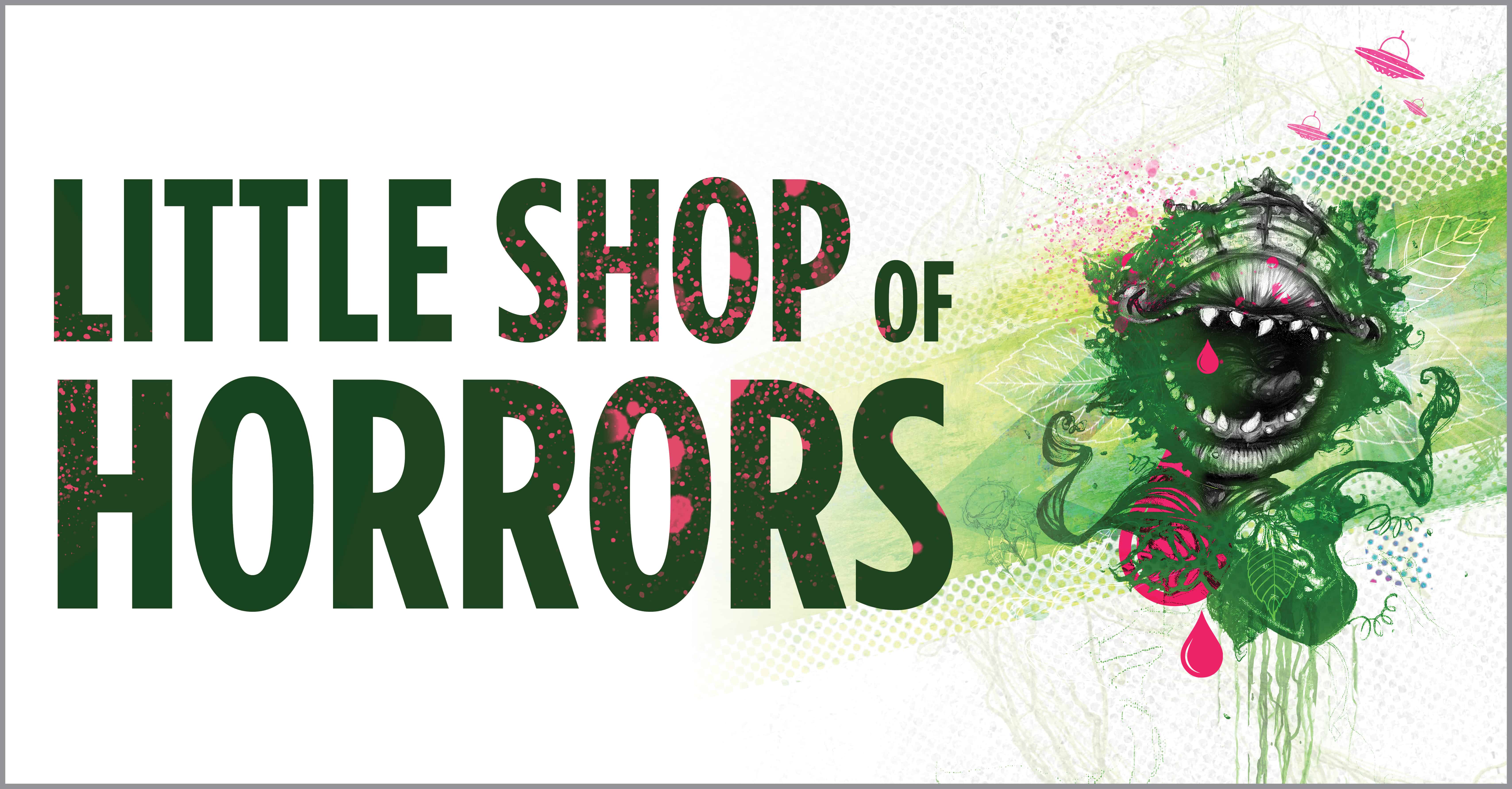DCPA NEWS CENTER
Enjoy the best stories and perspectives from the theatre world today.
Enjoy the best stories and perspectives from the theatre world today.

Little Shop of Horrors, the 80s musical about a lowly flower shop clerk who makes a Faustian bargain with his man-eating plant, was an unexpected success that has now won the adoration of generations.
The show has sci-fi roots in an early short story by H.G. Wells. “The Flowering of the Strange Orchid” about a carnivorous plant dates to 1894. A dark comedy version, “Green Thoughts” by John Collier, came along in 1932. And Arthur C. Clarke wrote his take with “The Reluctant Orchid” in 1956.
Those early works inspired the nasty little farcical horror B-movie by Roger Corman, The Passionate People Eater, famously shot on the cheap in two days on the set of another B-movie in 1960.
It was not until 1982 that Howard Ashman and Alan Menken adapted the Corman flick into the beloved musical Little Shop of Horrors, which began at the tiny WPA Theater Off-Off-Broadway and became a surprise smash hit. (In 1986 it was adapted back into a movie directed by Frank Oz and given a “happier” ending.)
Combining the bloody terror of early Sixties B-movies with the girl-group sound of the period (think the Ronettes, the Chiffons, the Shangri-Las), the tone contrasts dark and light, morbid and cheerful, doo-wop and death.
Throughout, the young musical geniuses — lyricist Ashman and composer Menken — aimed at a mashup of silly and horrifying. (A favorite example, note the lyrics rhyming “shang-a-lang” with “sturm and drang”.)
The result was less nasty, more hip and funny.
The bones of the show are classic musical theater, while the flesh is suitably creepy. According to the book Attack of the Monster Musical: A Cultural History of Little Shop of Horrors (2022) by Adam Abraham, Ashman wanted Little Shop to be “an old-fashioned musical” that “just happens to be about a man-eating plant from outer space.”
At the DCPA when he was planning the season, Theatre Company Artistic Director Chris Coleman thought, “we’ve done sweeping classical musicals, but we haven’t done something silly. Wouldn’t that be fun?”
After spending time with the show, Coleman said, “I realize how brilliantly built it is. I don’t know that I understood that watching it, in terms of story and how each song contributes to the story and moves it along.”
Coleman said, “I find it funny that these two young aspiring musical theatre geniuses, who were wanting a piece of American success, took this pretty cheesy, not very interesting film and made something very funny, very infections out of it. What’s delicious is to see a plant with an incredible soulful singing voice.
“But what it’s really about is, how much would it take for you to sell your soul? They take a group of characters in the worst part of town who just ‘gotta get outta here.’ They’re all seeking an escape from skid row at any cost.”
It’s all good, gory fun. “If you’re going to talk about end of world, you might as well laugh as you’re doing it.” Yet in directing, Coleman said, the task was to avoid any notion of a send-up or satire. “The temptation is to wink-wink, nudge-nudge,” he said.
As he was auditioning actors in New York, he “encouraged people to trust the simplicity of the character,” telling them, “Your job is to need what the character needs.” He instructed actors, “The characters are from the island of misfit toys, slightly broken humans, oddballs but oddballs with enormous heart. You are trying to figure out how to trust that. That’s when it gets really beautiful. You have to know that it’s okay for sadness to be present and that the story will still hold up and the humor will emerge. The actor’s job is to let the story unfold.”
Props and puppets are another key element, of course. “I don’t want to give anything away,” Coleman said, “but the goal is for the plant to have an incredible and surprising progression through the play. It’s like a science experiment, trying to get it to do all the thing you want it to do, and also make it reasonably comfortable for the actors. We’re trying to finesse it in a way that feels fun for the audience and not horrifying for an actor to do eight times a week.”
The show catapulted Ashman and Menken into Disney careers that changed the course of modern musicals. After the 1986 Little Shop of Horrors film, they were tapped to contribute music to Oliver and Company, followed by The Little Mermaid – which sparked what is now considered the Disney Renaissance (including Beauty and the Beast and Aladdin among other animated musicals, with numerous Academy Award nominations and wins along the way.)
The clever horror-comedy-rock musical that started it all continues to offer theatre audiences a needed escape, at least a temporary way to get outta here.
DETAILS
Little Shop of Horrors
Apr 11 – May 25, 2025 • Wolf Theatre
Tickets
